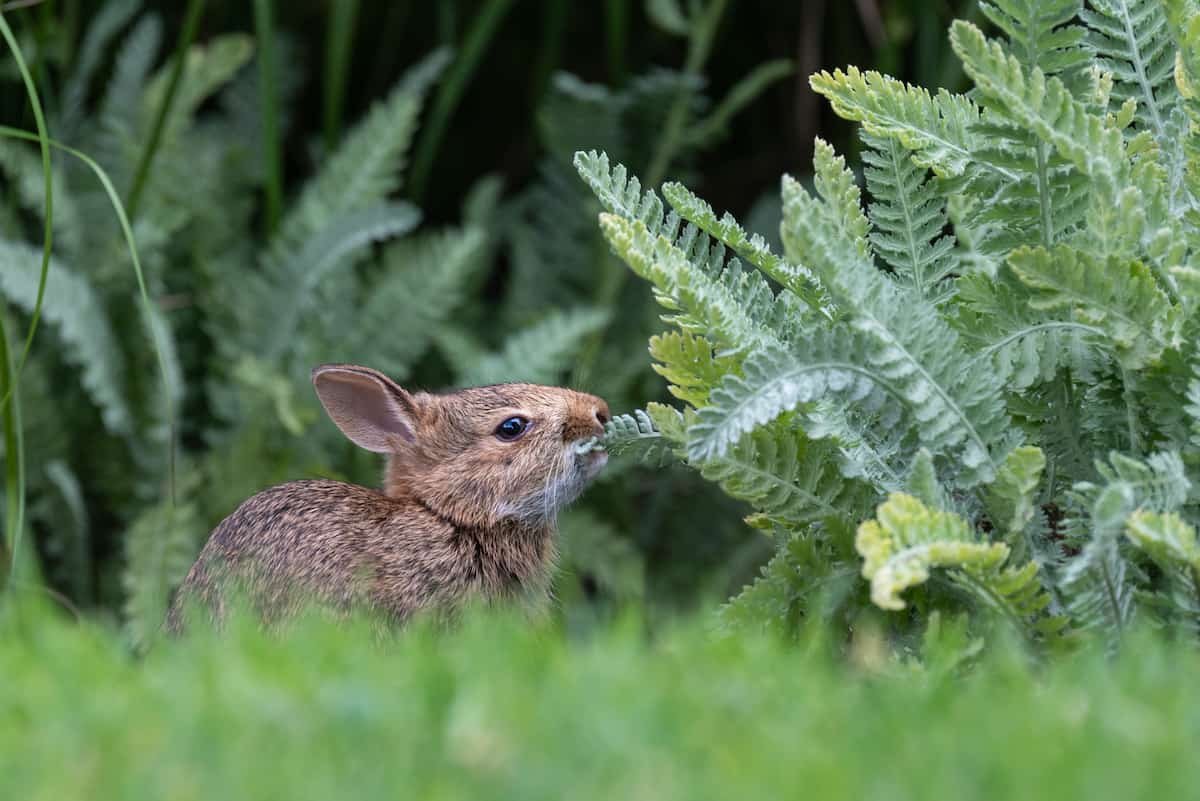With spring’s sweetness comes fresh, tender, new growth and the bunnies that make quick work of it. If you have rabbits in your vegetable garden, we’ve got ideas for plants they won’t devour (at least, that they don’t prefer). With a palette as expansive as ours, honing in on their least favorites means more for us. Gardening expert Katherine Rowe explores vegetable garden plants that rabbits avoid and how to use them as deterrents.
Bunnies are undeniably cute—except when they’re munching on our prized plants while we’re not looking. They happily devour tender new growth and food crops, often favoring the same treats we do. It’s frustrating to see our hard work and homegrown produce become a rabbit buffet.
If rabbits keep visiting, consider protecting your garden or growing vegetables they typically avoid. While every bunny has different tastes, some plant traits tend to deter them.
Rabbit-resistant veggies usually have:
- Textured foliage (fuzzy, rough, or spiny)
- Thick leaves
- Strong aromas
- Toxic compounds (like nightshades or plants with milky sap)
To reinforce your garden’s defenses, mix in perennials and annuals that rabbits dislike. Younger or extremely hungry bunnies might still nibble, but these plants generally repel them due to unappealing scents, textures, or toxicity.
Rabbit-Resistant Perennials (That Also Attract Beneficial Insects)
- Milkweed (Asclepias spp.) – Toxic to pets and people
- Beebalm (Monarda didyma)
- Catmint/Catnip (Nepeta spp.)
- Mountain Mint (Pycnanthemum spp.)
Rabbit-Resistant Annuals
- Ageratum (Ageratum houstonianum)
- Vinca (Catharanthus roseus)
- Spiderflower (Cleome hassleriana)
- Lantana (Lantana spp.)
- Geranium (Pelargonium spp.)
Artichoke
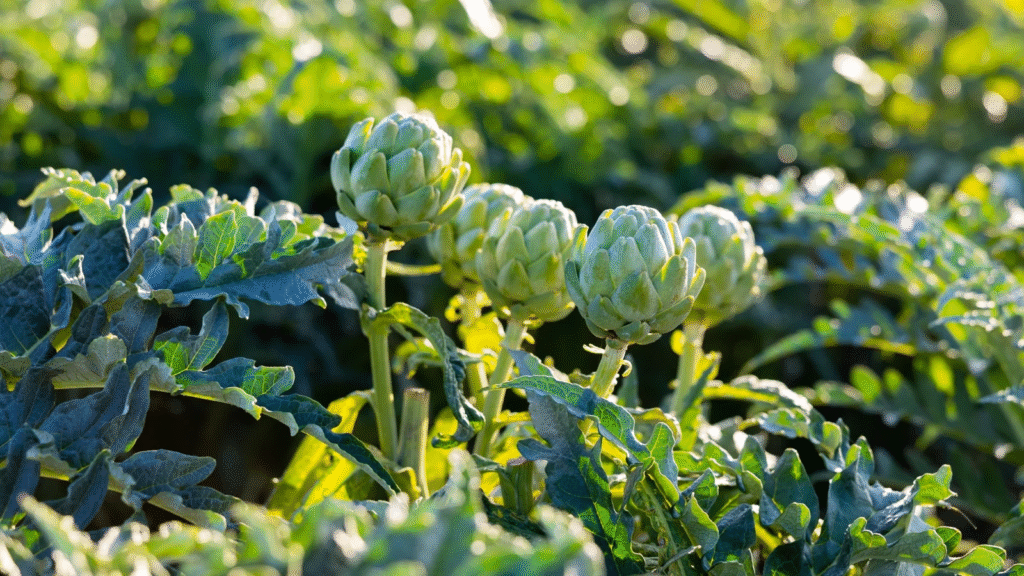
Cool Climate Tip: Needs extra care in colder regions.
Botanical Name: Cynara cardunculus (Scolymus Group)
Sun Needs: Full sun
Height: 3–5 ft
Artichokes are as ornamental as they are delicious—steamed and dipped in butter, they’re a treat. Their spiky, silvery foliage adds texture to the garden, and rabbits usually avoid it. Each plant produces 3–5 artichokes (which are actually underdeveloped flowers). Let a few bloom to enjoy their purple tufts and attract pollinators.
In zones 7+, they grow as perennials. Plant in late summer/fall for spring harvests. In colder climates, start indoors after frost and mulch for winter protection. ‘Green Globe Improved’ (an heirloom variety) matures in 5–6 months with less spiny leaves and better yields.
Tomato
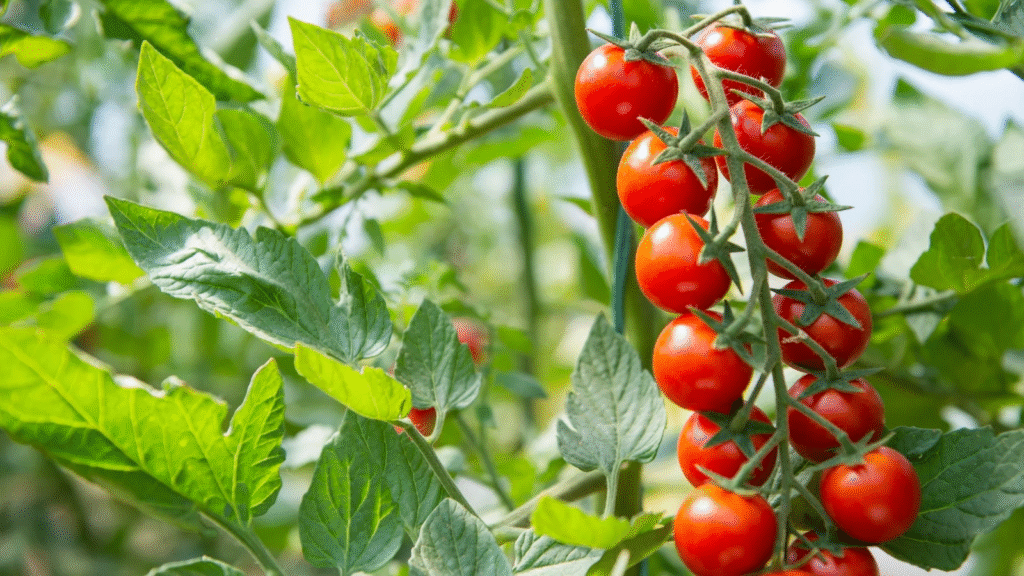
Harvest Tip: Pick slightly early to avoid pests and splitting.
Botanical Name: Solanum lycopersicum
Sun Needs: Full sun
Height: 8 in–25 ft
Zones: 3–11
Tomatoes are summer staples, but their leaves and stems contain toxic compounds (tomatine and solanine). While the fruit is safe, rabbits avoid the plant’s strong-smelling foliage.
For easy growing, try cherry tomatoes:
- ‘Chocolate Cherry’ – Sweet, purplish-red, 1-inch fruits; indeterminate vines.
- ‘Sungold’ – Early, golden, and extra sweet; resistant to diseases.
Harvest tomatoes a few days early to ripen indoors—they’ll taste just as good with fewer pest issues.
Squash
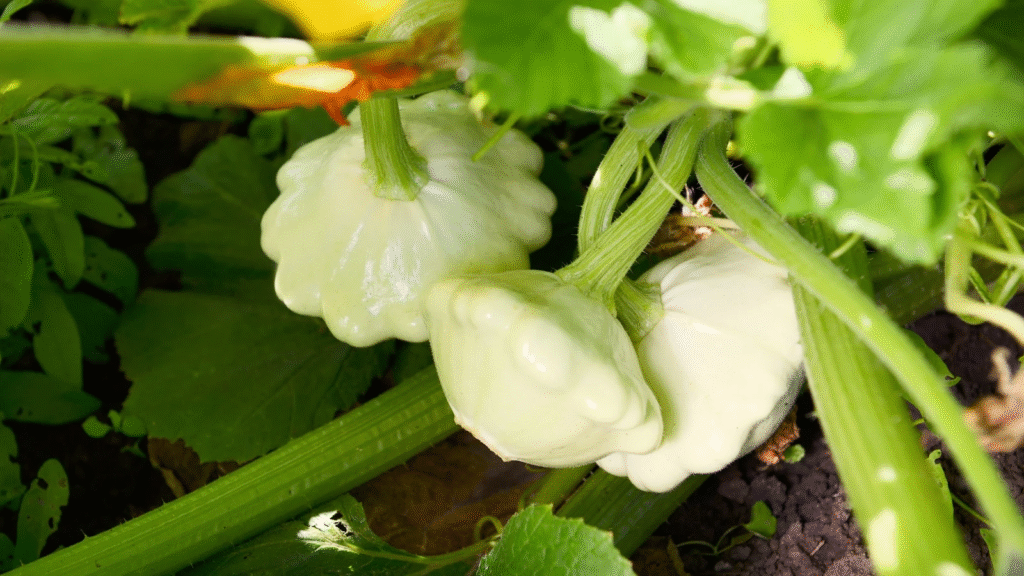
Description: Sprawling stems with broad, serrated leaves and round, pale green fruits.
Growing Tip: Direct-sow seeds for best results.
Botanical Name: Cucurbita spp.
Sun Needs: Full sun
Height: 2–12 ft
Squash leaves and stems have coarse hairs that deter rabbits (though young shoots may get nibbled). Winter squash (like pumpkins) matures in fall, while summer squash (like zucchini) produces quickly.
Plant seeds 1–2 weeks after frost when soil hits 70°F (21°C). Use biodegradable pots if starting indoors.
Corn
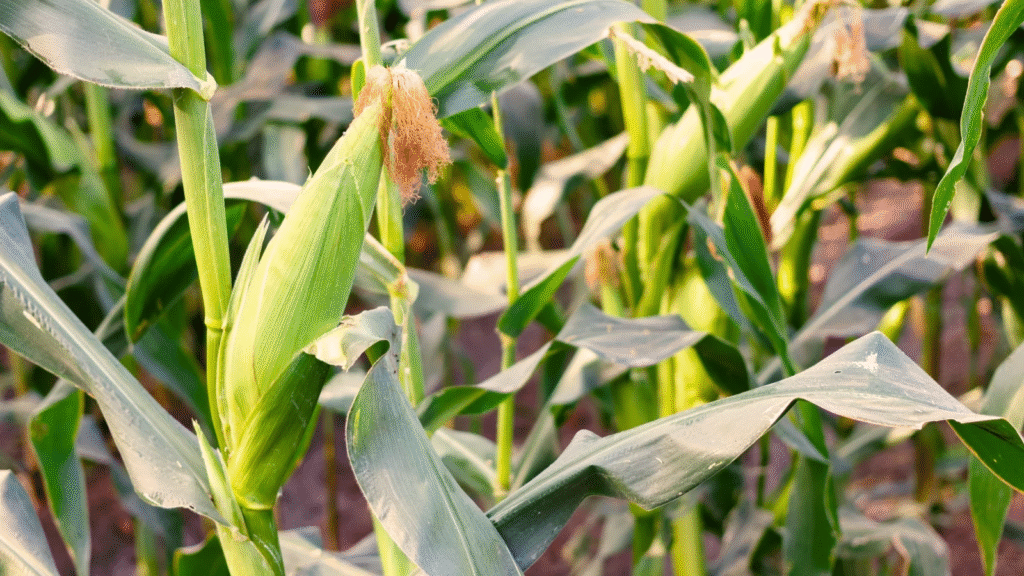
Description: Tall stalks with long green leaves and husk-covered ears.
Harvest Note: Sweetens in summer heat.
Botanical Name: Zea mays
Sun Needs: Full sun
Height: 5–12 ft
Corn isn’t nutritious for rabbits and can upset their digestion. As stalks grow, ears become harder for bunnies to reach (though other pests may knock them down).
Sweet corn is best for eating. Try:
- ‘Golden Bantam’ – Early, cold-tolerant heirloom.
- ‘Ambrosia’ – White/yellow kernels, great flavor.
- ‘Martian Jewels’ – Unique purple husks.
Sow after frost when soil is above 60°F (16°C).
Scallions (Green Onions)
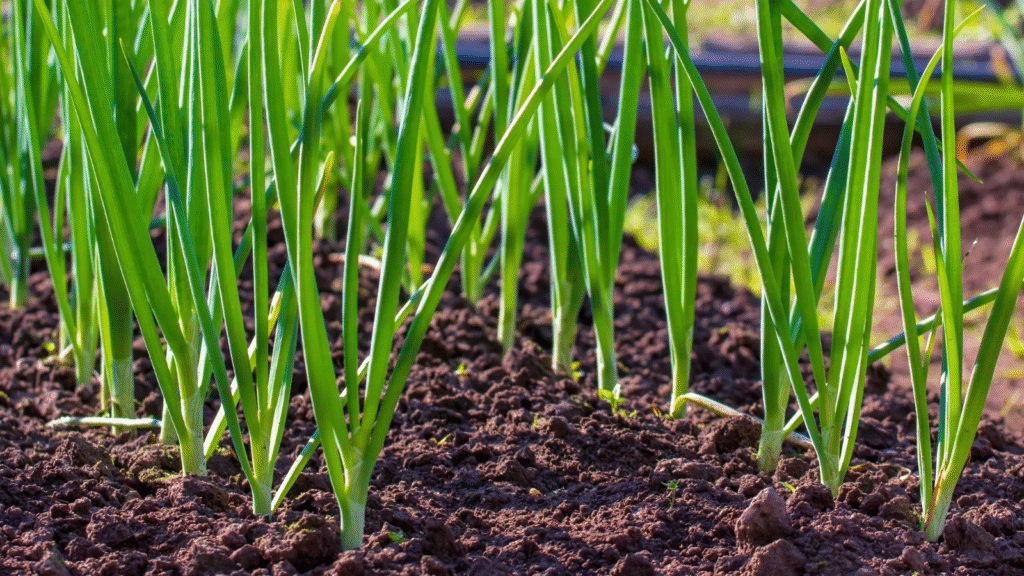
Description: Thin green stems with white bases, growing in dense clusters.
Growing Tip: Quick-growing for fresh harvests.
Botanical Name: Allium fistulosum
Sun Needs: Full sun
Height: 1–2 ft
Their pungent smell keeps rabbits away. Varieties:
- ‘White Lisbon’ – Hardy, matures in 60 days.
- ‘Tokyo Long’ – Mild, sweet flavor.
- ‘Italian Red of Florence’ – Vibrant red stems.
Sow in early spring or late summer.
Rosemary
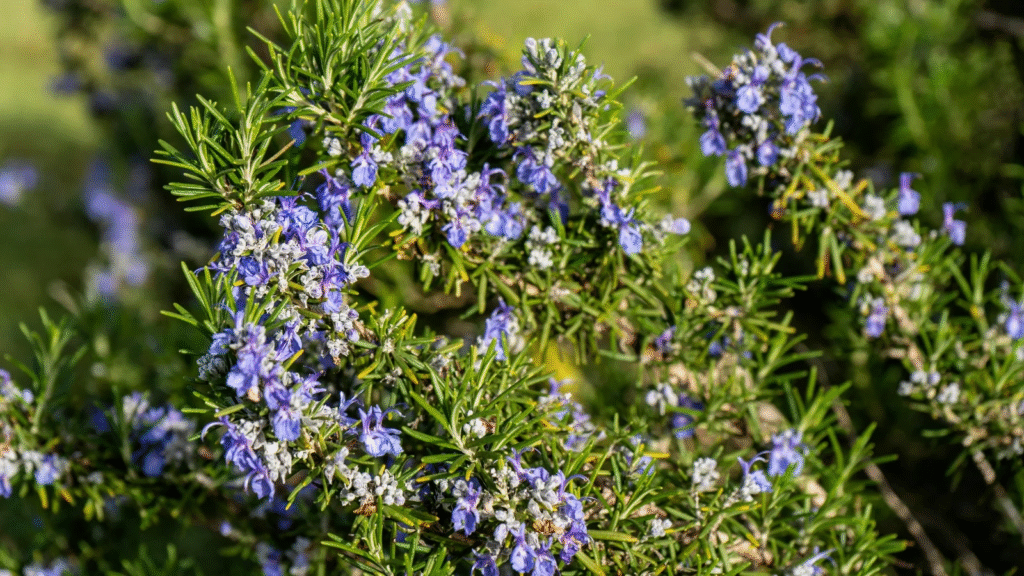
Description: Woody stems with needle-like leaves and tiny purple flowers.
Growing Note: Drought-tolerant and fragrant.
Botanical Name: Salvia rosmarinus
Sun Needs: Full sun
Height: 3–6 ft
Rabbits avoid its strong scent and tough foliage. ‘Barbecue’ has sturdy stems for grilling; ‘Arp’ is cold-hardy.
Garlic
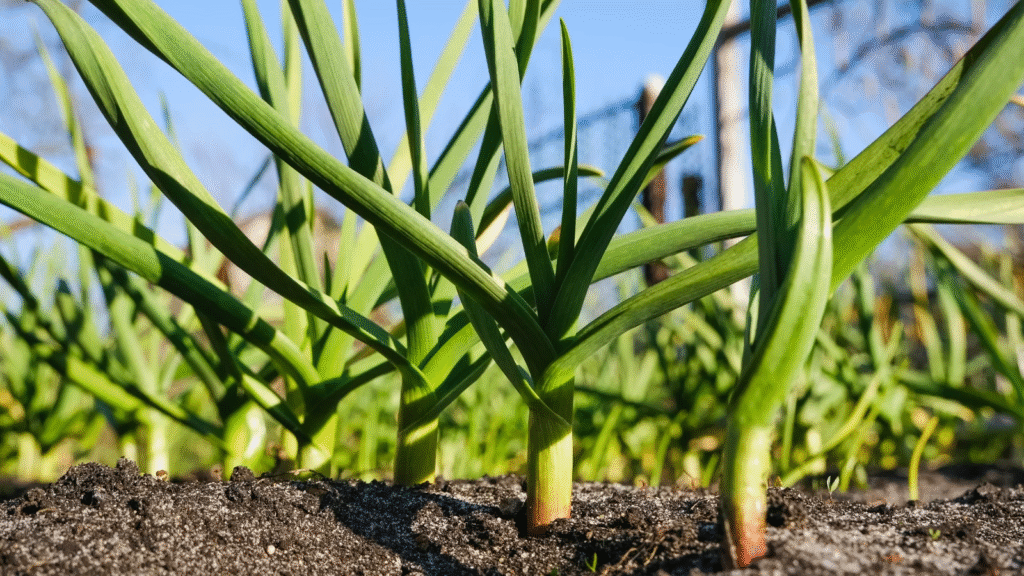
Description: Strap-like leaves with bulbs forming underground.
Growing Tip: Cold winters improve flavor.
Botanical Name: Allium sativum
Sun Needs: Full sun
Height: 1–2 ft
Toxic to rabbits. Plant in fall for spring harvests. Hardneck varieties (bold flavor) need cold winters; softneck (milder) grow anywhere.
Leeks
Description: Thick white stems with long green leaves.
Growing Tip: Plant early for summer harvests.
Botanical Name: Allium porrum
Sun Needs: Full sun
Height: 2–3 ft
Mild onion flavor; rabbits avoid them. ‘King Richard’ matures early (75 days) and tolerates cold.
Sage
Description: Velvety gray-green leaves on woody stems.
Growing Note: Resists mildew and drought.
Botanical Name: Salvia officinalis
Sun Needs: Full sun to partial shade
Height: 1–2 ft
Rabbits dislike its earthy scent. ‘Berggarten’ has broad leaves and lavender flowers.
Potatoes
Description: Bushy green plants with rough-skinned tubers.
Growing Tip: Plant in late spring for fall harvest.
Botanical Name: Solanum tuberosum
Sun Needs: Full sun
Height: 1–3 ft
Toxic to rabbits due to solanine. ‘Clancy’ (a small, creamy variety) grows well from seed.
Rhubarb
Description: Large green leaves with red-veined stalks.
Harvest Note: Tangy flavor for spring dishes.
Botanical Name: Rheum rhabarbarum
Sun Needs: Full sun
Height: 2–4 ft
Leaves are poisonous; stalks are edible (but high in oxalic acid). Needs cold winters.
Mexican Tarragon
Description: Narrow leaves with bright yellow flowers.
Growing Note: Heat-tolerant alternative to French tarragon.
Botanical Name: Tagetes lucida
Sun Needs: Full sun
Height: 6 in–3 ft
Rabbits may avoid its scent, but flowers are toxic in large amounts.
Asparagus
Description: Tall green spears emerging in spring.
Growing Tip: A long-term perennial investment.
Botanical Name: Asparagus officinalis
Sun Needs: Full sun to partial shade
Height: 4–5 ft
Takes 2–3 years to establish but produces for up to 15 years. Pair with tomatoes or basil to deter pests.

